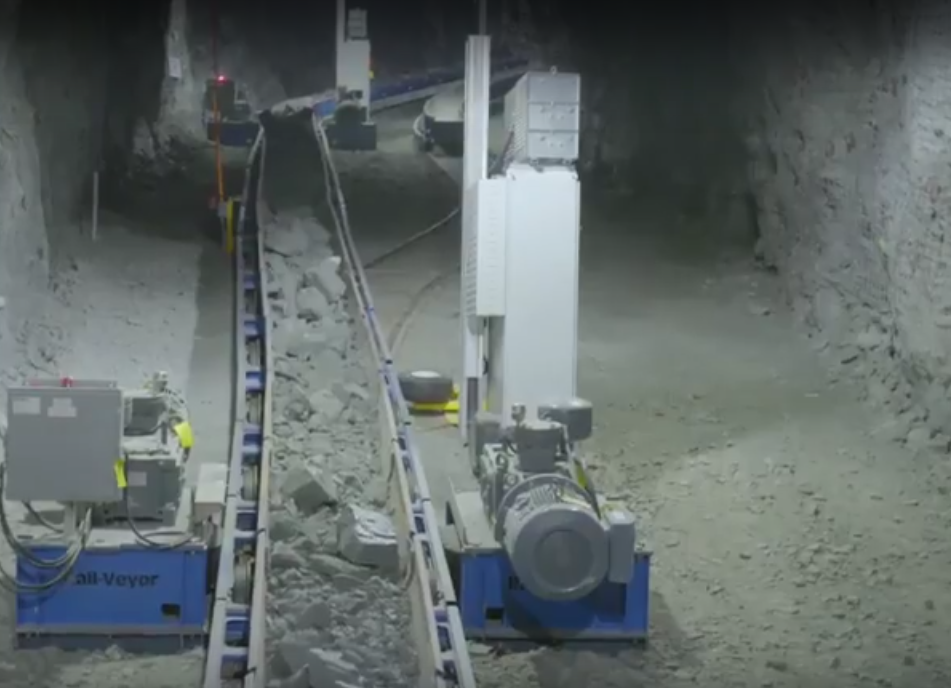The Deep 1 project at Agnico-Eagle’s Goldex mine in Quebec was declared to be in commercial production in July 2017 and is progressing well. The mining method is long-hole stoping with cemented paste backfill, the same method used in the M and E zones. The mining rate for Deep 1 is approximately 6,000 t/d. Production from Deep 1 is expected to extend the Goldex mine life through 2025. In its latest report from October 2017, the company states that to date, two stopes have been mined with positive reconciliation to the block model. Mining activities in the Deep 1 area are expected to continue to ramp up through 2018. Given the successful start-up of Deep 1 and encouraging exploration results, the company is evaluating the potential to mine a portion of the Deep 2 Zone, which starts below the Deep 1 Zone at 1,200 m below surface.
The main ore mining fleet includes five Caterpillar R2900G XTRA LHDs and two Sandvik LH621 LHDs along with seven Caterpillar 45 t AD45B trucks. Production drilling and blasting uses Cubex 6200 ITH drills and 100% bulk emulsion with electronic detonators is used, with an Orica emulsion pump mounted on a carrier (3,000 kg capacity). Ground support uses 10-15 m cable bolts.
Agnico Eagle has said because it is a low grade deposit, it had to come up with a new and cost effective way to transport the ore underground. “That’s when the engineers came up with the idea to bring in a new technology called the Rail-Veyor.” Frederic Langevin said one of the reasons the mine chose Rail-Veyor because unlike regular conveyors, the Rail-Veyor can easily negotiate turns. “There are also other health and safety and industrial hygiene advantges. There are many other aspects, including operating costs that are lower than using trucks.” The company said a lot of effort was put into the project especially on the regulation side. It was also a challenge to develop the mine to accommodate the Rail-Veyor in terms of steepness, with a 17-20% ramp and ascending 500 ft.
The Rail-Veyor has a series of two wheeled rail cars that form a continuous open trough to transport material. A series of dual-stationary drive stations located at intervals along the track provides the forward thrust or brake action. Material is dumped from the train by inverting the train in a vertical loop. The Goldex installation has 3 km of rail, with six trains of 160m (68 cars each), five by-passes and 91 drive stations with ore transported at 600 t/h. The system is remote controlled and electrically powered, essentially a light rail haulage solution. The conveyor is propelled by foam-filled tyres at the drive stations located at intervals along the track, which begins at the 1,250 m level below surface and ends at the 730 m level. The ore is dumped by the Caterpillar trucks into a grizzly with openings of 18 in by 18 in and there’s a rockbreaker room at the 1,150 m level to handle oversize. A vibrating feeder feeds the material to the Rail-Veyor cars, depositing the fines first to avoid damage to the troughs.











